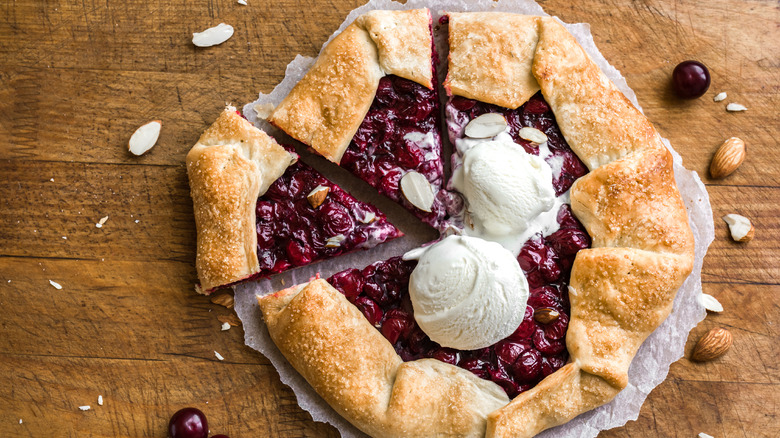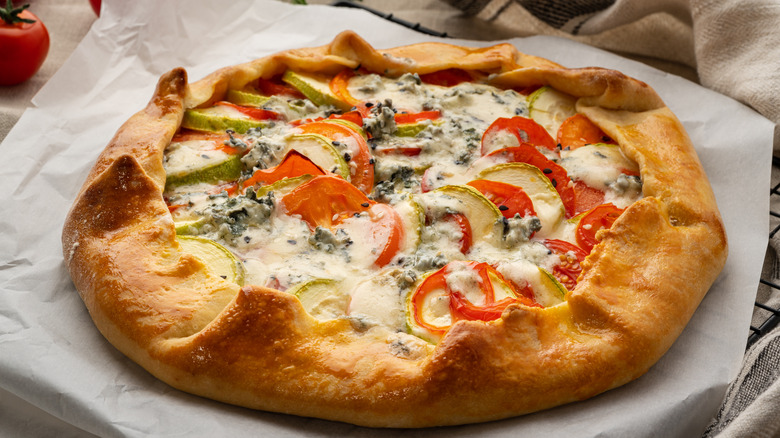Galette Vs. Crostata: What's The Difference?
There is something about a flaky, buttery crust filled with luscious fruit or creamy sweet fillings that makes people positively swoon. In short, people adore pie. However, pies don't necessarily have to be sweet. In fact, in England during medieval times, pies were typically filled with meat (per Time). Britannica defines a pie as a "dish made by lining a shallow container with pastry before filling the container with a sweet or savory mixture." The history of this pastry goes back further than many people realize, though, with some mentions dating back to pre-medieval periods. Most historians agree that the foundation of pie dates back to the ancient Greeks who made the first pastry shell out of flour and water (via Time).
Whether sweet or savory, the forms a pie can take are extensive. Martha Stewart's website lists seven types of pie and outlines how they differ from each other. Among them are the classic single and double-crust pie that Americans typically see filled with fruit —but don't discount a perfect chicken potpie! Also mentioned are tarts, quiches, hand pies, galettes, and crostatas. Each contains a crust and a filling, and requires specified baking times. Looking at each type side by side, it's easy to see how they differ from each other, with the exception of the galette and crostata. They appear practically identical, so is there, in fact, any difference between the two?
What's in a name?
At first glance, crostatas and galettes both appear to be rustic-looking tarts. Each of them contains a crust with an open top so that the filling is easily seen. However, the tart shows its sophistication with a smooth or scalloped edge. It's baked in a ring or tart pan for perfect edging, and also can be shaped in a circle, square, or rectangle, and is often available in mini-form, per Fine Cooking. Galettes and crostatas are round and shaped by hand. Once the pastry is rolled out flat, filling is added to the middle while avoiding two to three inches around the border so the edges can be folded up by hand to keep the filling inside the shell while baking (via Fine Cooking).
The galette is historically tied to the French word galet, which means "a smooth flat pebble," suggesting its classic shape (according to Fine Cooking). Crostatas are simply the Italian version of the galette, meaning, there is really no difference at all except the name (per MyRecipes). Yes, you heard that right! They're essentially interchangeable. Whether your creation is savory and stuffed with tomatoes or sweet and filled with apples and cinnamon, your galettes and crostatas will all likely be brushed with egg wash before baking. This creates a gorgeous, golden, shiny crust that will be a warm and delicious delight when you cut it into triangles for serving.

